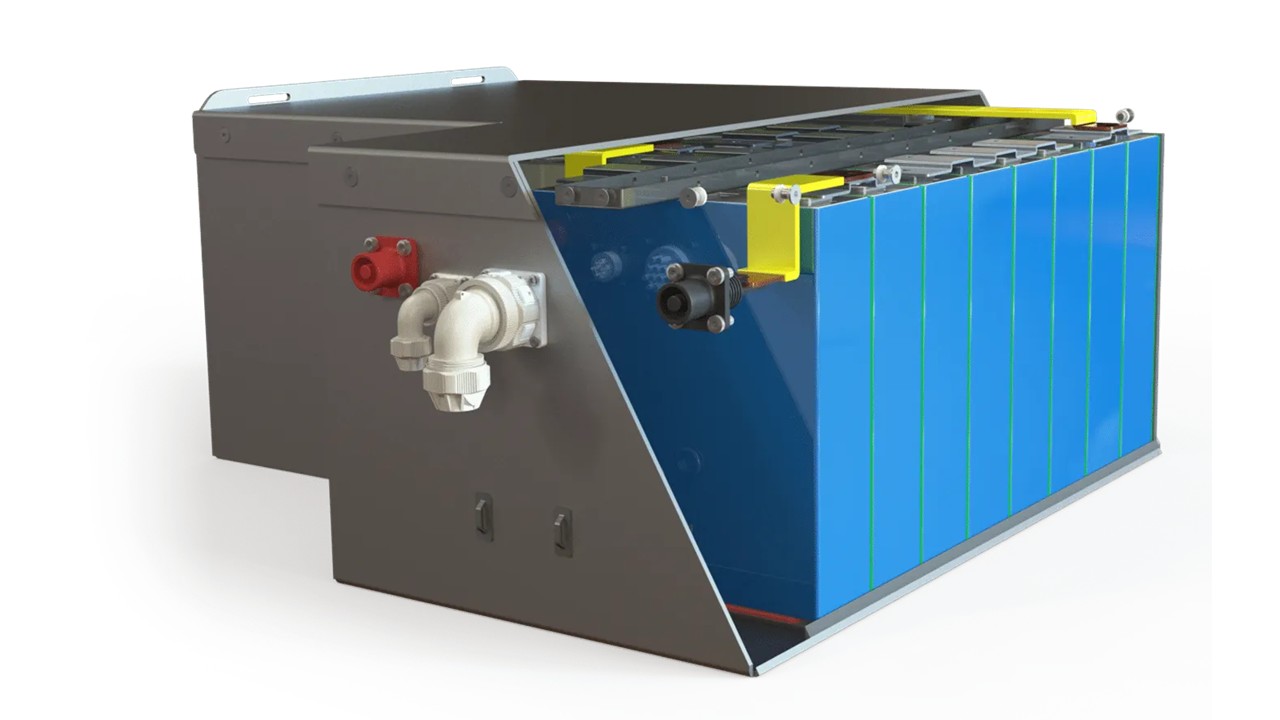Electrification of agricultural machinery: the role of lithium
How can agricultural machinery meet increasingly strict emission regulations without compromising performance? Lithium batteries offer a solution by partially or fully replacing diesel engines. This article highlights the benefits and shows how the transition to electric power is impacting the agricultural sector.
How lithium batteries replace diesel hydraulics in agriculture
Many agricultural machines still run on diesel engines that not only provide traction (forward and backward motion) but also power hydraulic systems. This leads to unnecessary fuel consumption, noise, and emissions. With an electric-powered ePTO (electric power take-off), this can change. These systems run on lithium batteries and supply energy without requiring the engine to idle.
One major advantage of lithium batteries is their significantly longer lifespan compared to lead-acid batteries. While a lead-acid battery starts to degrade after 300 to 600 charge cycles, a lithium battery can withstand up to 2,000 cycles with minimal performance loss. This results in long-term savings on replacement and maintenance costs.
There are already several examples of lithium batteries being used in agricultural machinery, such as:
-
Asparagus harvesters: used intensively for only a few months a year. Electrification reduces noise and vibrations, making the work more pleasant.
-
Autonomous weed control machines: operate without direct supervision and can easily be charged overnight.
-
Small orchard machines: use swappable battery packs, allowing continuous operation throughout the day without long downtimes.
Besides user benefits, legislation is also driving the change. Stricter emission regulations are pushing more farmers and manufacturers toward sustainable alternatives.

Lithium battery
The impact of stricter emission standards on agricultural machinery
Governments are enforcing increasingly strict emission standards in agriculture, forcing manufacturers and farmers to seek more sustainable alternatives. Full electrification is one option, but in some cases, a hybrid setup provides a better balance between emission reduction and practicality:
-
Machines with high peak power demand
Some machines, such as harvesters, require short bursts of extra power. A hybrid setup can provide this by using a lithium battery for peak loads, while a smaller diesel engine supplies the base power. This reduces fuel consumption, emissions, and noise. -
Machines returning daily to a charging station
Agricultural machines that are stored at a fixed location after each workday, like those in greenhouse farming or fruit cultivation, can operate on lithium batteries during the day and charge overnight—reducing diesel use and emissions. -
Seasonal agricultural machines
Machines like asparagus harvesters are only used a few months per year. A hybrid system helps minimize noise, vibrations, and emissions during the harvest season. -
Machines frequently changing location
Mobile machines like weed control units and mowing boats are often used in nature reserves or urban areas where noise and emissions must be minimized. With a hybrid setup, they can run mostly on lithium batteries, with a small diesel engine providing backup power only when needed—lowering emissions and noise.
Challenges and obstacles in electrifying agricultural machinery
Despite the benefits, farmers and manufacturers also face challenges when switching to electric systems:
-
High investment costs
The purchase price of electric machines is still higher than that of diesel models. This can slow adoption, especially for farmers using machines only seasonally. -
Battery standardization
There is no universal battery system standard in agriculture. As a result, batteries are often machine-specific, limiting interchangeability and reuse. -
Legislation
While strict emission rules promote electrification, sudden implementation can cause financial strain for businesses.
Nevertheless, the role of lithium batteries continues to grow. Their lower maintenance requirements and longer lifespan make the transition increasingly attractive to agricultural companies. To maintain that long lifespan, proper battery maintenance is essential.
How to maintain a lithium battery
Maintaining a lithium battery is simple and low-effort. To extend its lifespan, avoid fully discharging the battery and recharge it regularly. If the battery won’t be used for an extended period, store it at 40–50% charge. Also, keep the connections clean and dust-free for optimal performance.
Unlike lead-acid batteries, there’s no need to refill water or perform intensive checks. Still, it’s wise to periodically check that all connections are tight. If the battery isn’t in use for a while, recharge it every few months. This keeps the battery in good condition and ready for immediate use.
For agricultural companies considering lithium batteries, choosing a reliable supplier is key—one that offers not only the right products but also support in implementation.
Why choose lithium batteries from VARIODRIVE?
VARIODRIVE provides lithium batteries perfectly suited for agricultural machinery. They’re designed to handle long working days and can be easily recharged overnight—ready to go the next day.
Thanks to LFP (lithium iron phosphate) technology, the batteries are stable and safe, without the risk of overheating. Unlike lead-acid batteries, they require minimal maintenance and retain capacity much longer. This means less downtime and a battery that lasts for years—hassle-free.
VARIODRIVE doesn’t just supply batteries—they help find the best solution for your application. Whether it’s for a new machine or a transition to electric drive, there’s always a suitable option.
Want to equip your agricultural machine with a lithium battery? Contact us at sales@variodrive.nl or call +31 186 636280 for tailored advice.
